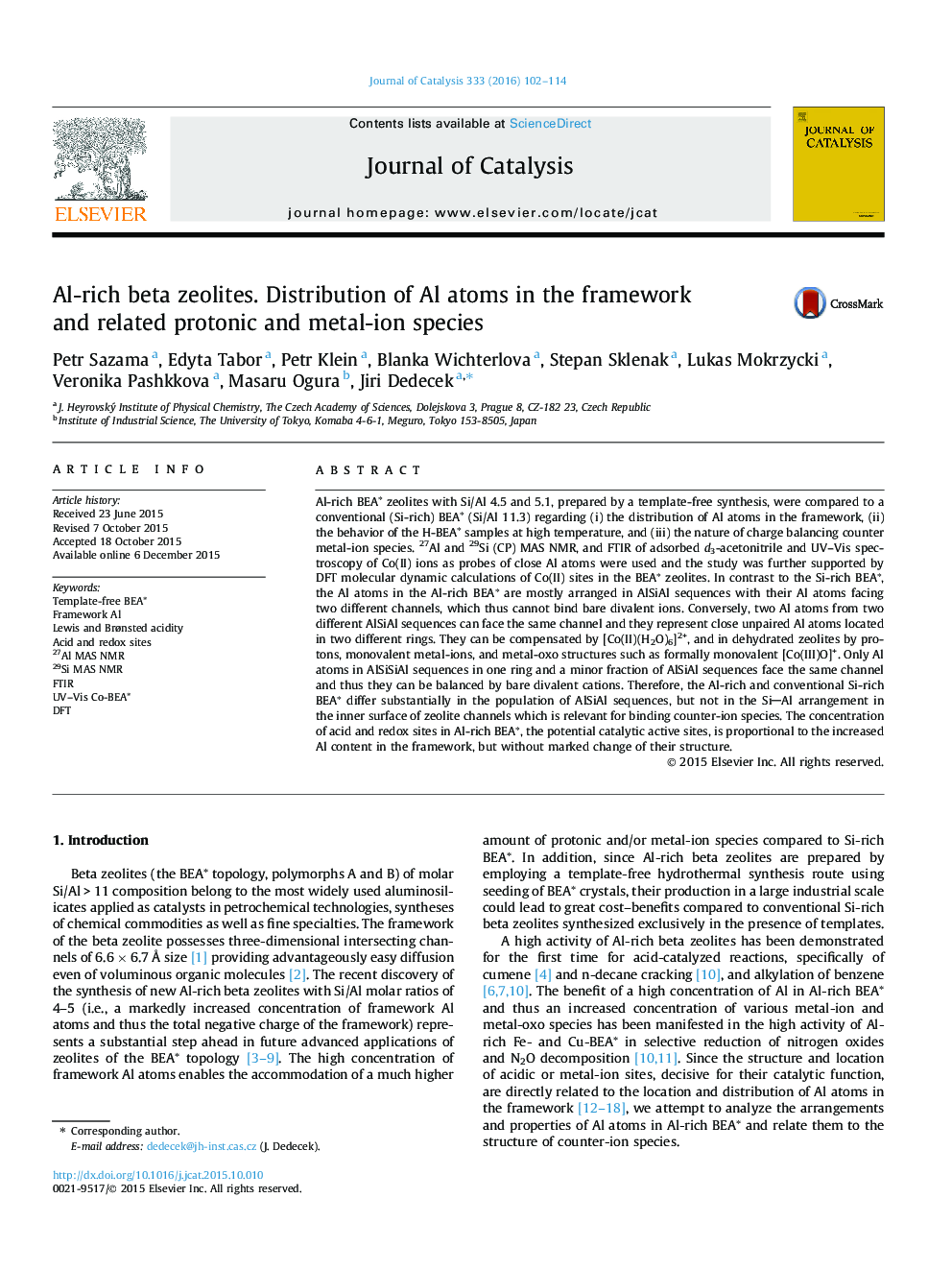| کد مقاله | کد نشریه | سال انتشار | مقاله انگلیسی | نسخه تمام متن |
|---|---|---|---|---|
| 60660 | 47541 | 2016 | 13 صفحه PDF | دانلود رایگان |
• Al-rich BEA∗ (Si/Al 4–5) are compared to conventional Si-rich BEA∗ (Si/Al 11).
• High Al content results in a high content of AlSiAl besides AlSiSiAl sequences.
• Close Al in different rings of channels comes from AlSiAl facing different channels.
• Strength, structure, and dehydroxylation of Brønsted to Lewis sites are similar.
• The structure of redox sites (metal-oxo ions) of a high content is similar.
Al-rich BEA∗ zeolites with Si/Al 4.5 and 5.1, prepared by a template-free synthesis, were compared to a conventional (Si-rich) BEA∗ (Si/Al 11.3) regarding (i) the distribution of Al atoms in the framework, (ii) the behavior of the H-BEA∗ samples at high temperature, and (iii) the nature of charge balancing counter metal-ion species. 27Al and 29Si (CP) MAS NMR, and FTIR of adsorbed d3-acetonitrile and UV–Vis spectroscopy of Co(II) ions as probes of close Al atoms were used and the study was further supported by DFT molecular dynamic calculations of Co(II) sites in the BEA∗ zeolites. In contrast to the Si-rich BEA∗, the Al atoms in the Al-rich BEA∗ are mostly arranged in AlSiAl sequences with their Al atoms facing two different channels, which thus cannot bind bare divalent ions. Conversely, two Al atoms from two different AlSiAl sequences can face the same channel and they represent close unpaired Al atoms located in two different rings. They can be compensated by [Co(II)(H2O)6]2+, and in dehydrated zeolites by protons, monovalent metal-ions, and metal-oxo structures such as formally monovalent [Co(III)O]+. Only Al atoms in AlSiSiAl sequences in one ring and a minor fraction of AlSiAl sequences face the same channel and thus they can be balanced by bare divalent cations. Therefore, the Al-rich and conventional Si-rich BEA∗ differ substantially in the population of AlSiAl sequences, but not in the SiAl arrangement in the inner surface of zeolite channels which is relevant for binding counter-ion species. The concentration of acid and redox sites in Al-rich BEA∗, the potential catalytic active sites, is proportional to the increased Al content in the framework, but without marked change of their structure.
Figure optionsDownload high-quality image (55 K)Download as PowerPoint slide
Journal: Journal of Catalysis - Volume 333, January 2016, Pages 102–114
